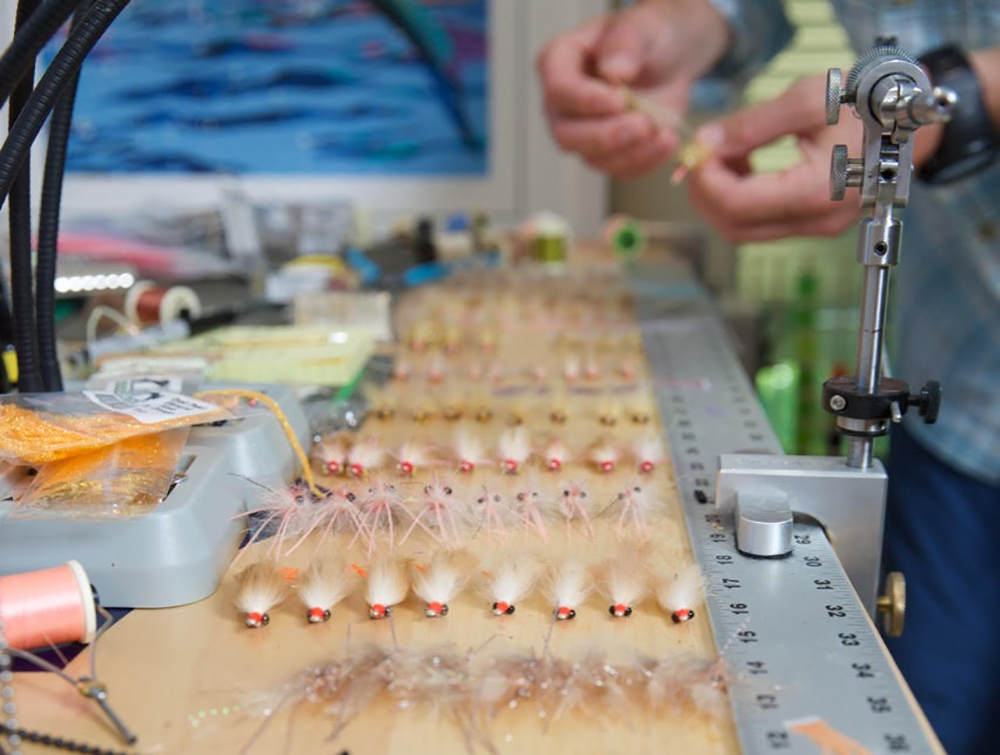
I have started dabbling in saltwater fly fishing as if I need one more thing to spend my money on and frustrate me about catching fish, and one of the more intriguing parts of it to me is creating and tying my own flies. It seems like a great way to be able to spend time doing fishing related stuff at home when you’re not able to be on the water for whatever reason – weather, seasonality (even though that’s not really a thing here in The Bahamas) or just being “too busy” to be able to take enough consecutive time off to spend a half day or more fishing.
I wanted to see what it would be like to learn how to tie some flies and why I might want to, so I reached out to Drew Chicone, arguably one of the most well known saltwater fly tiers around.
Here’s what Drew told me:
Having spent a fair amount of time behind the vise or around others tying, I believe that the reasons for tying fur and feathers onto a hook go much beyond catching fish, further than any who don’t tie could ever imagine. Whether it’s the camaraderie or the creativity, art, or simply a means to catch fish, people are passionate about tying flies for a lot of different reasons. For me, it’s all those reasons and more. Tying has become part of my daily routine, and teaching people how to tie is one of my favorite activities. When I started tying somewhere around the age of six or seven, it was simply a way to be with my dad and fight off cabin fever during the seemingly endless winters in upstate New York. Saturday morning cartoons were replaced with tying the Leadwing Coachman, and the trout flies I learned to tie in the winter lead to a passion for deer hair bass bugs in the summer. The flies seemed to change with the seasons of my life. Wherever I was, I was fishing and tying flies for the fish at that particular time and place.
I live in Florida now, and the seasonal changes are not quite as noticeable. Sometimes I tie to get away from the distractions and general busyness of everyday life. I find it calms my nerves and relaxes my mind . . . I guess it’s kind of like therapy for me. Other times I am sick of channel surfing, or my need to be doing “something” takes over, but most of the time it’s I tie to try and pacify my insatiable yearning to convince, trick, or outsmart fish. The thrill I get and sinister grin on my face is not just from actually catching the fish I have cast my fly too . . . well not all completely. The gratification also comes more from solving a constantly changing puzzle with infinitely different rules, knowing what it will take to make a specific fish, at a specific time and place, turn on and eat even if it doesn’t want to. Tomorrow the game will change, and solving the puzzle that convinces another fish will take a new solution.
Teaching fly tying is rewarding for me because I get to watch students evolve from technicians to artists, usually within a short time. If you have ever wanted to create your own patterns, improve the flies you tie, or just catch more fish, this article should help get you started. Once your on your way and tying, my other twelve books will be a turn-by-turn road map for tying flies for specific species and designing your on flies. My goals are to explain and demystify when to use specific materials and colors are used and why. The clear illustrations and pragmatic approach to fly tying that follows takes the guesswork out of which materials should be used for a specific type of fly, and the tips and tricks will help you create your own patterns.
Drew has a great website where he has a number of fly tying books and ebooks, plus a great introductory post into what you need to know as a fly tying beginner. I highly recommend you go check it out!


Leave a Reply